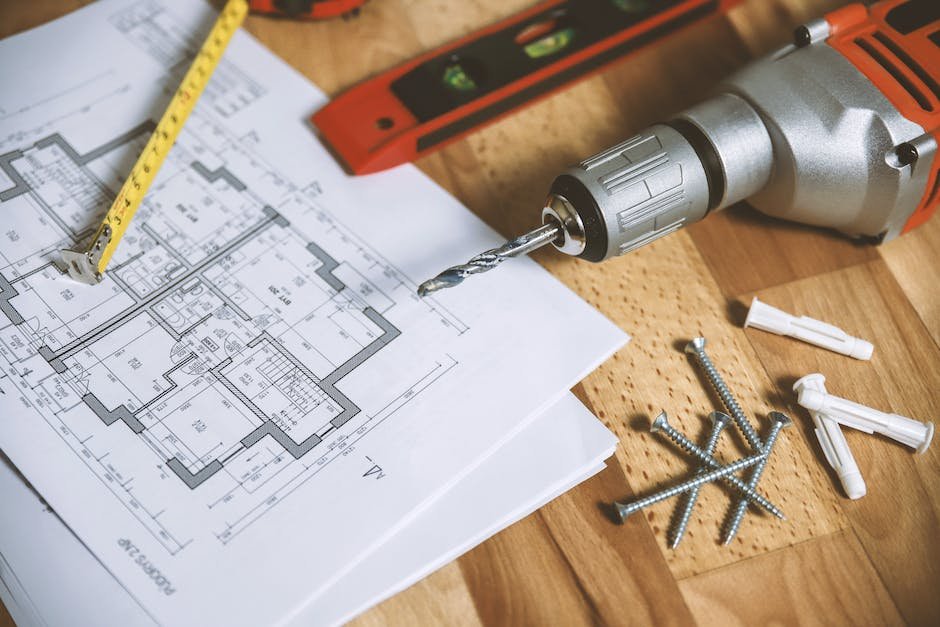Imagine a bustling beehive, filled with diligent worker bees, buzzing with excitement as they build honeycombs that glisten in the sun. The queen bee, regal and revered, gracefully lays her eggs, perpetuating the cycle of life within the colony. Yet, amidst this harmonious symphony, beekeepers often find themselves faced with a practical dilemma – how to ensure that their honey production remains undisturbed, while also safeguarding the hive against an overzealous queen? Enter the humble yet essential tool known as the queen excluder. In this article, we will delve into the art of crafting your own queen excluder, unlocking the secrets to maintaining a thriving hive and maximizing your honey yield. Get ready to embark on an adventure that combines a little bit of craftsmanship and a whole lot of honeybee wisdom!
Table of Contents
- Choosing the Right Materials
- Measuring and Cutting the Frame
- Adding the Wire Mesh
- Securing the Excluder to the Hive
- Optional Modifications for Improved Efficiency
- Q&A
- Wrapping Up

Choosing the Right Materials
When it comes to any project, selecting the right materials can make all the difference. To ensure success, it’s crucial to consider various factors that will affect the outcome of your endeavor. By carefully assessing the characteristics and properties of different materials, you can choose the perfect ones that not only meet your requirements but also contribute to the overall aesthetic appeal.
Consider the following tips when selecting materials for your project:
- Functionality: Determine the intended purpose of your project. Are you looking for materials that are lightweight, durable, or weather-resistant? Understanding the functional requirements will help narrow down your options.
- Aesthetics: Consider the visual impact of the materials. Do you want a sleek and modern look or a more rustic and natural feel? Keep in mind that the materials you choose will greatly influence the final appearance of your project.
- Cost and Budget: Set a budget and consider the cost-effectiveness of the materials. Don’t forget to factor in the long-term maintenance costs, as some materials may require regular upkeep, while others are low-maintenance.
- Sustainability: Increasingly, people are prioritizing environmentally friendly options. Look for materials that are eco-friendly, renewable, or recyclable, reducing their impact on the environment.
- Availability: Check the availability and accessibility of the materials you’re considering. Ensure they can be sourced easily and won’t cause delays in the project timeline.
Remember, selecting the right materials is an essential step in any project, whether it’s construction, crafting, or even interior design. By considering functionality, aesthetics, cost, sustainability, and availability, you’ll be well-equipped to make informed decisions and create something truly remarkable.

Measuring and Cutting the Frame
Creating a well-constructed frame is crucial for any project, whether it’s a picture frame or a custom-sized window. Accurate measurements and precise cuts are essential for achieving a professional finish. Here are some steps to guide you through the process:
- Gather your materials: Before diving into the project, make sure you have all the necessary tools at hand. You’ll need a tape measure, a pencil, a miter saw or a circular saw, and safety equipment like goggles and gloves.
- Measure twice, cut once: Taking precise measurements is the foundation of a successful frame. Ensure that you measure both the width and the height of the opening, accounting for any allowances or overlaps you desire. It’s always a good idea to double-check your measurements to avoid any costly mistakes.
- Mark your measurements: Once you have your measurements, use a pencil to mark the cut lines on your material. Depending on the type of frame you’re creating, remember to account for the width of the frame itself when marking your measurements.
- Make accurate cuts: Using a miter saw or a circular saw, carefully cut along the marked lines. Ensure that your saw is configured to make the correct type of cut, be it a straight or angled cut. Always prioritize safety by wearing protective gear and following proper usage guidelines for your saw.
By following these steps, you’ll be well on your way to creating a perfectly measured and precisely cut frame for your project. Remember, patience and attention to detail go a long way in achieving professional results!

Adding the Wire Mesh
As you progress in your DIY project, the next crucial step is to add the wire mesh. This essential component will provide security and support to your structure while allowing for optimal airflow. Here are a few tips to ensure a seamless installation:
- Select the right type of wire mesh: Consider the purpose of your project and choose a wire mesh that suits your needs. For example, if you are constructing a garden fence, opt for mesh with smaller gaps to prevent critters from accessing your plants.
- Measure and cut: Take precise measurements of the area you wish to cover with wire mesh. Use wire cutters or a similar tool to carefully cut the mesh according to the dimensions required.
- Secure the mesh: Use sturdy wire or metal staples to attach the mesh to the framework of your structure. Work methodically, starting from the top and working your way down to ensure a secure and smooth finish.
By correctly, you can enhance the durability and functionality of your project while maintaining its aesthetic appeal. Do not rush this step; instead, take your time to ensure each section is properly secured. With the wire mesh in place, you are one step closer to completing your project with finesse.

Securing the Excluder to the Hive
Once you have selected the perfect excluder for your hive, it’s time to secure it in place. Ensuring that the excluder is properly installed is essential for maintaining a productive and organized hive. Here are some steps to follow:
- Inspect the hive: Before attaching the excluder, make sure the hive is clean and in good condition. This will help prevent any obstruction or damage to the excluder.
- Positioning the excluder: Carefully place the excluder between the brood chamber and the honey supers. The excluder should fit snugly, allowing worker bees to pass through, but keeping the queen bee confined to the lower chamber.
- Secure with hive tools: Use a hive tool to gently pry apart the frames surrounding the excluder. Once there is enough space, slide the excluder into place, ensuring it is centered and level.
By securely fastening the excluder to the hive, you are promoting efficient honey production while still maintaining the separation between the brood area and honey reserves.
Optional Modifications for Improved Efficiency
- Implementing a smart thermostat: Consider upgrading your HVAC system with a smart thermostat to control and automate the temperature settings in your home. This innovative device uses artificial intelligence algorithms to learn your preferences and adjust the temperature accordingly, optimizing energy usage and reducing utility bills.
- Utilizing energy-efficient appliances: Replace old and inefficient appliances with newer models that are ENERGY STAR certified. These appliances are designed to consume less energy while maintaining high performance levels. From refrigerators to washing machines, making this switch can lead to significant energy savings over time.
- Investing in LED lighting: Replace traditional incandescent bulbs with energy-efficient LED lights. These bulbs consume significantly less electricity and have a lifespan that surpasses incandescent bulbs by a large margin, reducing maintenance and replacement costs.
- Enforcing proper insulation: Assess the insulation in your home and make necessary improvements to ensure that your space is well-insulated. Proper insulation prevents heat or cool air from escaping, allowing your HVAC system to operate more efficiently. Consider insulation options such as double-glazed windows, insulated doors, and attic insulation.
Remember: These modifications are optional, but implementing them can greatly enhance the overall energy efficiency of your home. Choose the ones that align with your goals and budget, and start enjoying the benefits of reduced energy consumption and lower utility bills.
Q&A
What is a queen excluder?
A queen excluder is a device used in beekeeping to keep the queen bee from laying eggs in certain sections of the hive. It typically features small gaps that worker bees can pass through, but the larger queen bee cannot.
Why would I want to make my own queen excluder?
Making your own queen excluder allows you to customize it to fit your specific beekeeping needs and save some money along the way. Plus, it can be a fun and rewarding craft project for beekeepers.
What materials do I need to make a queen excluder?
To make your own queen excluder, you’ll need a wooden frame, wire mesh with small gaps, nails or screws, a hammer or screwdriver, and basic woodworking tools.
How do I assemble the queen excluder?
First, measure and cut the wire mesh to fit the size of your wooden frame. Secure the mesh to the frame using nails or screws, ensuring that there are no gaps or wrinkles. Finally, attach the frame to your beehive using your chosen method.
Are there any important considerations when making a queen excluder?
It’s crucial to ensure that the gaps in the wire mesh are small enough for worker bees but large enough to prevent the queen from passing through. Additionally, make sure the queen excluder is properly attached to the hive to prevent any accidental movement or damage.
How effective is a homemade queen excluder compared to a store-bought one?
When made correctly, a homemade queen excluder can be just as effective as a store-bought one. However, it’s important to consider the quality of materials and construction to ensure optimal performance. Regular inspections and maintenance are also necessary to keep it in good condition.
Can I use alternative materials for the queen excluder?
While wood and wire mesh are commonly used, alternative materials like plastic frames and nylon screens can also be used to make a queen excluder. Just remember to choose materials that are safe and durable for long-term use in a beehive.
Any tips for successful queen excluder usage?
It’s crucial to regularly check and clean the queen excluder to prevent the buildup of propolis or wax, which can hinder its effectiveness. Additionally, monitor the behavior and health of your hive to ensure the queen is laying eggs in the desired sections and there are no signs of stress or swarming.
Wrapping Up
As we conclude our journey through the world of beekeeping, we hope this guide has armed you with the knowledge and inspiration to embark on your own beekeeping adventure. Making your very own queen excluder is not only a cost-effective solution but also a testament to your creativity and resourcefulness.
By following the simple steps outlined in this article, you have become a master of your hive, ensuring the queen remains where she should be while allowing the industrious worker bees to carry out their tasks unhindered. The queen excluder becomes the gatekeeper of productivity, separating the queens from the cogs in the honey-making machine.
Remember, as you embark on your beekeeping journey, it’s crucial to seek further knowledge and explore different perspectives. Share your experiences, join local beekeeping communities, and learn from other passionate apiarists. The world of beekeeping is ever-evolving, and there is always something new to discover.
Appreciate the beauty of the intricate dance between bees and nature, and marvel at the wonders that await you as a guardian of these remarkable creatures. The rewards of beekeeping extend far beyond the sweet nectar that fills your jars; it’s a deeper connection to the delicate web of life that surrounds us.
So, put on your bee suit, grab your toolkit, and unleash your creativity. Whether you’re an aspiring beekeeper or a seasoned veteran, the art of crafting your own queen excluder is a testament to your dedication and love for these magnificent creatures.
Dream big, buzz with enthusiasm, and let your beekeeping endeavors flourish as you embark on this marvelous journey. May your hives thrive, and the buzzing symphony in your backyard resonate with nature’s harmony.
Now, it’s time to let your buzzing imagination take flight and venture into the enchanting world of beekeeping. Remember, with a queen excluder in hand and your heart filled with passion, you possess the power to create a haven for bees, fostering a world where the queen reigns supreme and honey floweth abundantly. Happy beekeeping!
As an affiliate, my content may feature links to products I personally use and recommend. By taking action, like subscribing or making a purchase, you’ll be supporting my work and fueling my taco cravings at the same time. Win-win, right?
Want to read more? Check out our Affiliate Disclosure page.